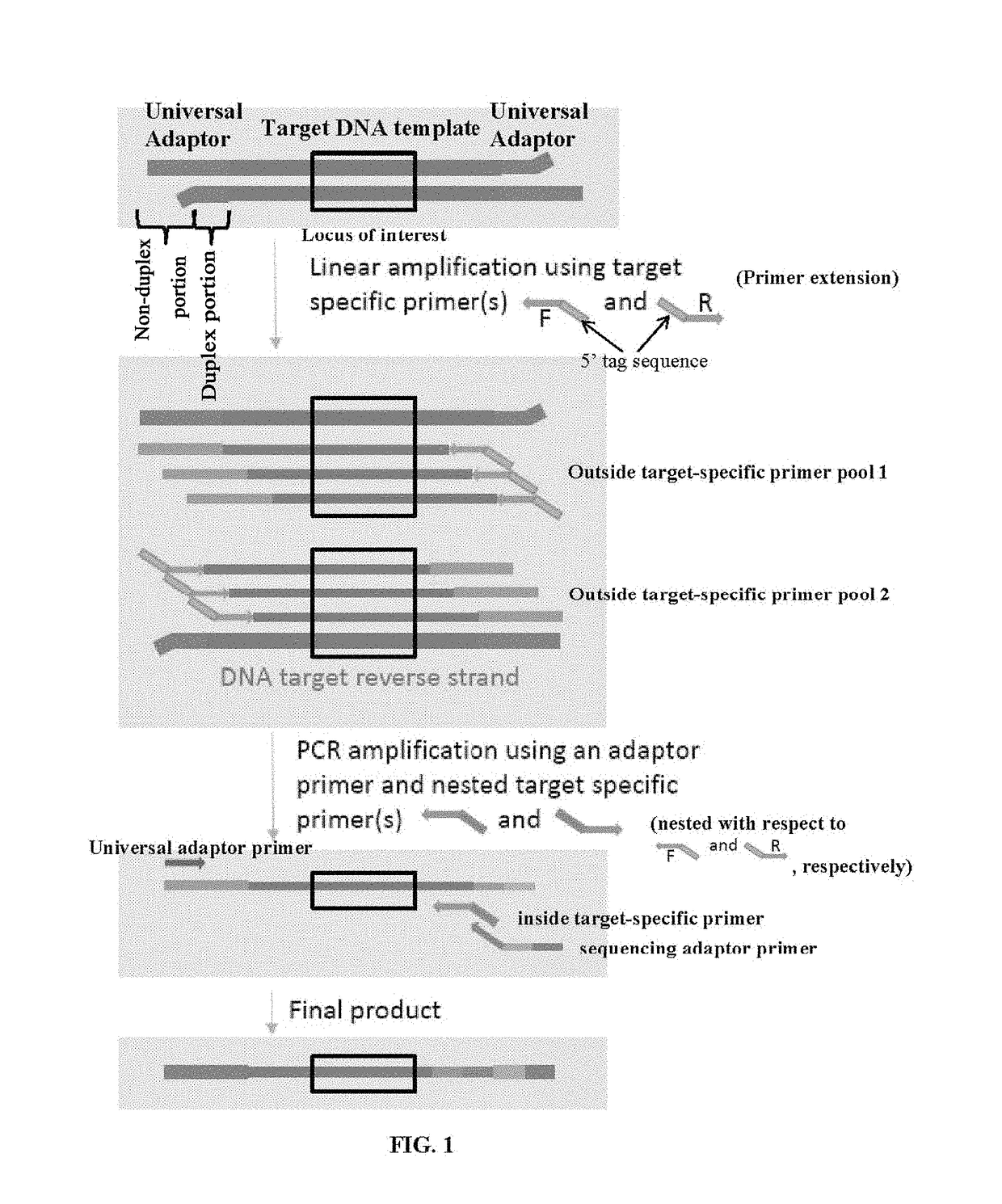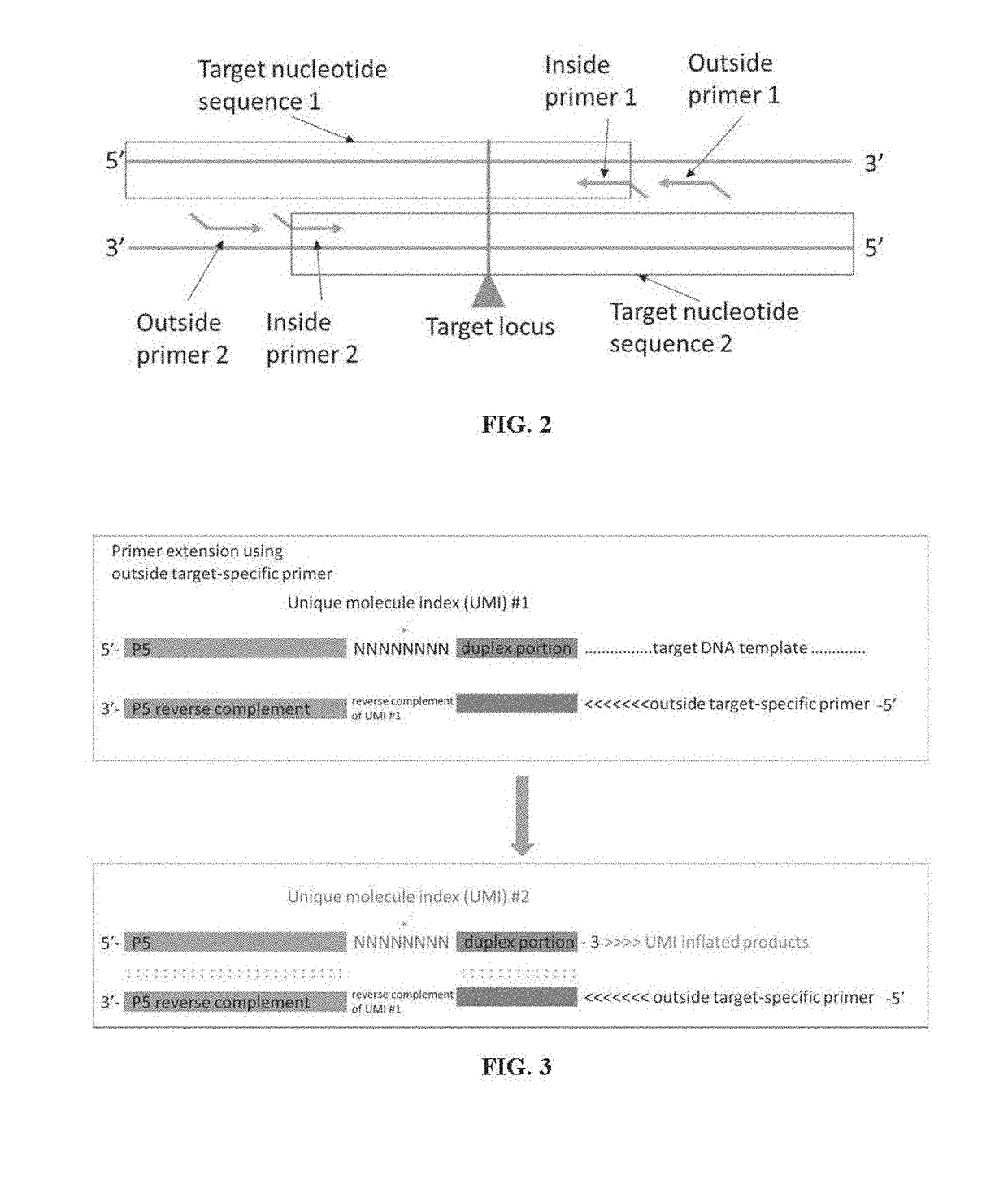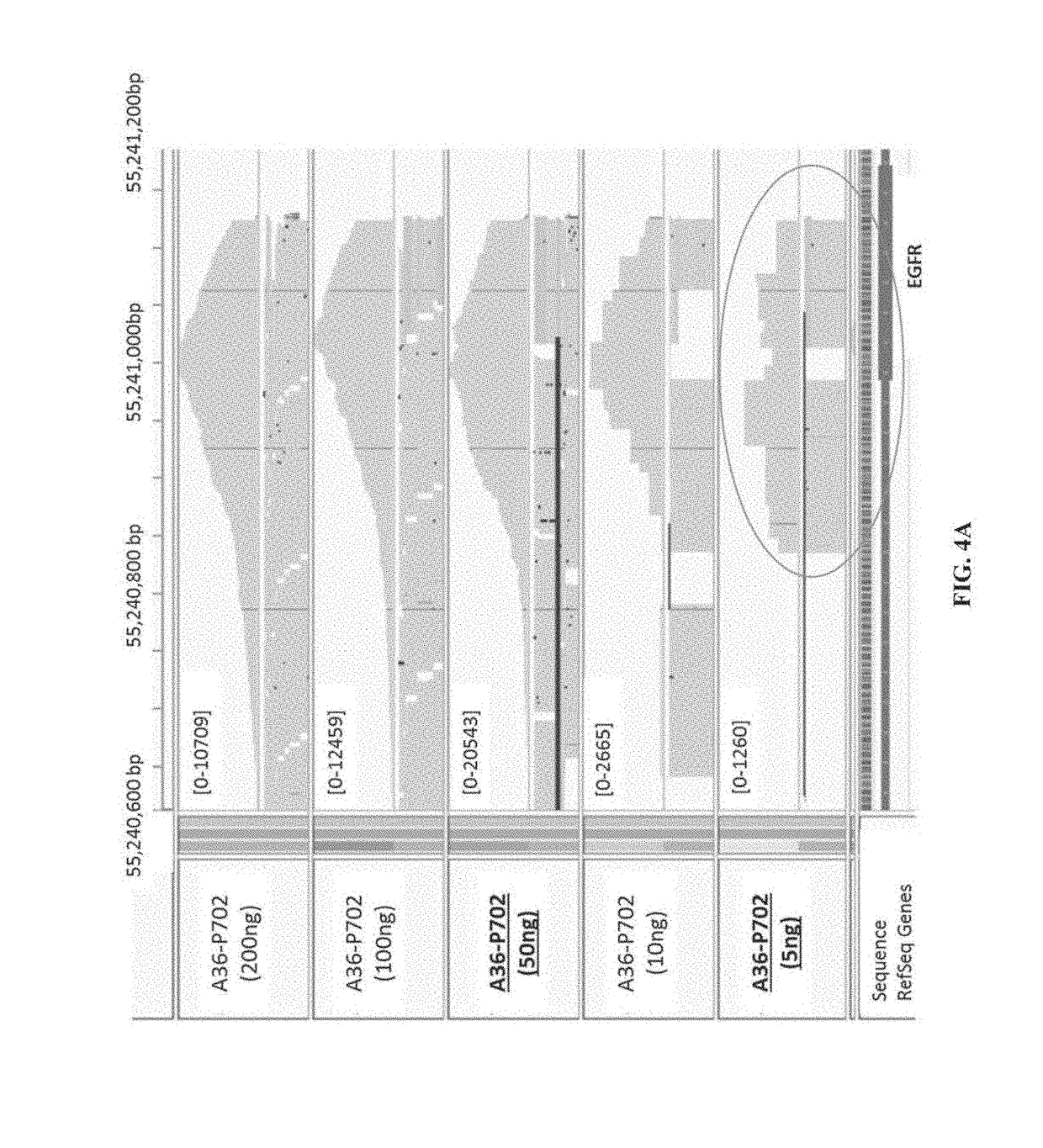Methods of enriching and determining target nucleotide sequences
- Summary
- Abstract
- Description
- Claims
- Application Information
AI Technical Summary
Benefits of technology
Problems solved by technology
Method used
Image
Examples
example 1
ficient Target Enrichment and Sequencing Methods for Sensitive Detection of Cancer-Associated Sequence Variants
[0221]This example describes an exemplary method of detecting cancer-associated sequence variants. Eight universal adaptors each having a sample barcode were used to prepare a multiplexed sequencing library. Target sequences having a total of 246 loci were enriched from each nucleic acid sample. Two different amounts of starting input human DNA samples, namely 5 ng and 50 ng, were used. KAPA enzymes were used as an example. FIG. 1 shows a schematic of the method.
Primer Preparation
[0222]Each universal adaptor was prepared by annealing one Top Oligo (first strand) and one matching Bottom Oligo (second strand) as shown in Table 2 below. Also shown in Table 2 are universal adaptor primer, sequencing primers and exemplary pool of outside and inside primers for multiple loci of interest in TP53 gene.
[0223]Universal adaptors with or without blocking moieties can be used. For examp...
example 2
ous RNA-Based Detection of Gene Fusion and gDNA-Based Detection of Mutations in a Single Reaction
[0237]This example describes detection of sequence variants from RNA and gDNA in a single sequencing reaction.
Step 1. RNA Purification from FFPE Sample.
[0238]Briefly, first FFPE samples were subjected to RNA extraction using the FORMAPURE® FFPE kit. RNA concentration was determined using QUBIT® RNA kit. A total of about 15 ng of total nucleic acids, including 10 ng extracted RNA, and 5 ng gDNA, was used in the next step.
Step 2. Double Strand cDNA Synthesis
[0239]1) RNA denaturation: Each RNA sample was adjusted to 11.0 μL using DEPC-treated water to a PCR tube, followed by addition of 1.0 μL of random hexamer (300 ng / μL) and 1.0 μL of dNTP (10 mM). The mixture was mixed by pipetting 5 times, and RNA denaturation was performed by incubation at 65° C. for 5 min (with heat lid on at 103° C.). After the incubation, the sample plate was immediately chilled on ice-water for at least 1 min, brie...
example 3
n of Target Enrichment Methods
[0245]This example compares various target enrichment methods involving exponential amplification (i.e., AMP method) versus linear amplification (i.e., exemplary method of the present application) in target enrichment 1 (i.e., step 2 of Example 1), fast versus slow temperature ramping mode during primer extension cycles, and different starting amounts of DNA samples.
[0246]As shown in Table 3, a multiplexed sequencing library having a total of 24 target enriched samples were prepared to assess three different experimental factors, each factor having two different settings, and each experimental condition combination was tested in triplicates. Same experimental steps as described in Example 1 were carried out, except for the three experimental factors. The three factors were: (1) DNA input amount (50 ng or 5 ng); (2) Target enrichment 1 step: primer extension (i.e., linear amplification) or PCR amplification (i.e., exponential amplification); and (3) prim...
PUM
| Property | Measurement | Unit |
|---|---|---|
| Temperature | aaaaa | aaaaa |
| Fraction | aaaaa | aaaaa |
| Fraction | aaaaa | aaaaa |
Abstract
Description
Claims
Application Information
 Login to View More
Login to View More - R&D
- Intellectual Property
- Life Sciences
- Materials
- Tech Scout
- Unparalleled Data Quality
- Higher Quality Content
- 60% Fewer Hallucinations
Browse by: Latest US Patents, China's latest patents, Technical Efficacy Thesaurus, Application Domain, Technology Topic, Popular Technical Reports.
© 2025 PatSnap. All rights reserved.Legal|Privacy policy|Modern Slavery Act Transparency Statement|Sitemap|About US| Contact US: help@patsnap.com



